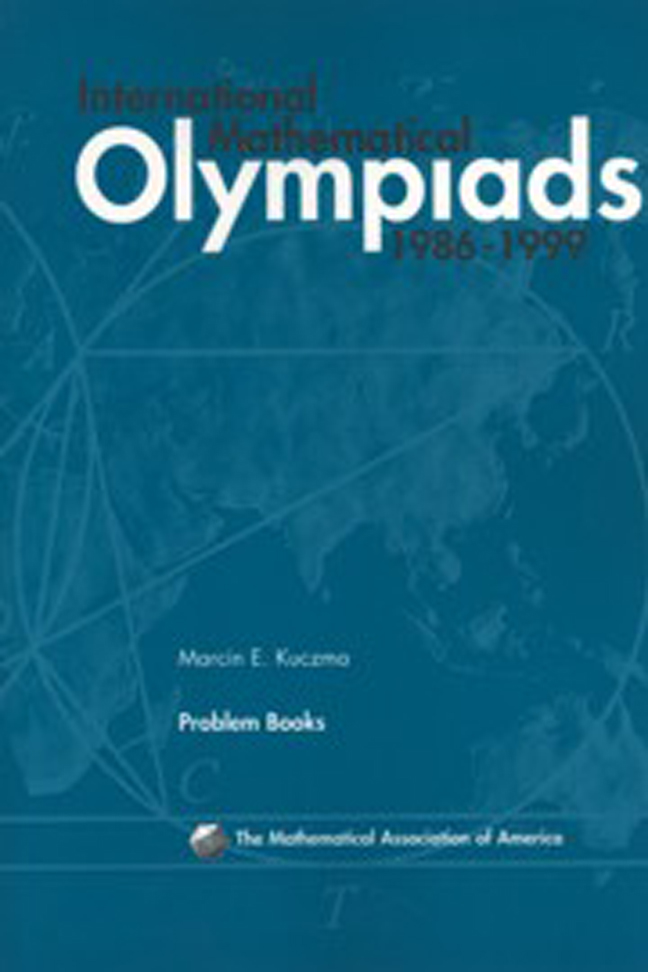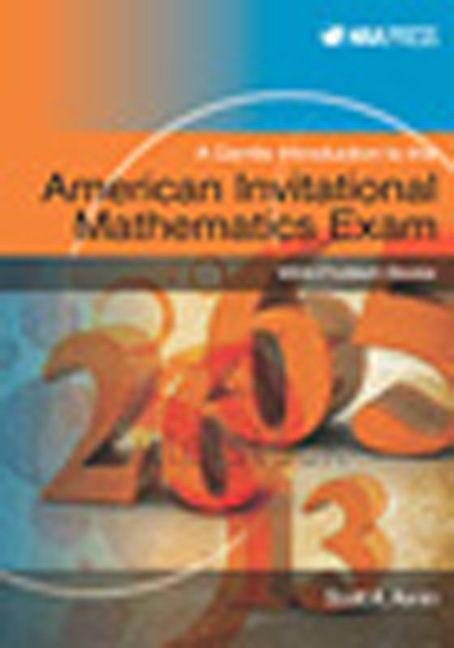11 results in Problem Books

First Steps for Math Olympians
- Using the American Mathematics Competitions
-
- Published by:
- Mathematical Association of America
- Published online:
- 09 June 2017
- Print publication:
- 15 July 2006
-
- Book
- Export citation

Trigonometry
- A Clever Study Guide
-
- Published by:
- Mathematical Association of America
- Published online:
- 09 June 2017
- Print publication:
- 01 September 2015
-
- Book
- Export citation

International Mathematical Olympiads 1986-1999
-
- Published by:
- Mathematical Association of America
- Published online:
- 09 June 2017
- Print publication:
- 15 July 2003
-
- Book
- Export citation

Euclidean Geometry in Mathematical Olympiads
-
- Published by:
- Mathematical Association of America
- Published online:
- 26 May 2017
- Print publication:
- 30 April 2016
-
- Book
- Export citation

A Gentle Introduction to the American Invitational Mathematics Exam
-
- Published by:
- Mathematical Association of America
- Published online:
- 26 May 2017
- Print publication:
- 01 January 2016
-
- Book
- Export citation

Aha! Solutions
-
- Published by:
- Mathematical Association of America
- Published online:
- 05 January 2012
- Print publication:
- 01 January 2009
-
- Book
- Export citation

A Friendly Mathematics Competition
- 35 Years of Teamwork in Indiana
-
- Published by:
- Mathematical Association of America
- Published online:
- 05 January 2012
- Print publication:
- 01 January 2003
-
- Book
- Export citation

The Contest Problem Book IX
- American Mathematics Competitions (AMC 12), 2001-2007 Contests
-
- Published by:
- Mathematical Association of America
- Published online:
- 05 January 2012
- Print publication:
- 01 June 2008
-
- Book
- Export citation

The Contest Problem Book VIII
- American Mathematics Competitions (AMC 10), 2000-2007 Contests
-
- Published by:
- Mathematical Association of America
- Published online:
- 05 December 2011
- Print publication:
- 01 June 2008
-
- Book
- Export citation

The Contest Problem Book VII
- American Mathematics Competitions, 1995-2000 Contests
-
- Published by:
- Mathematical Association of America
- Published online:
- 05 December 2011
- Print publication:
- 01 January 2006
-
- Book
- Export citation

Hungarian Problem Book IV
- Based on the Eötvös Competitions 1947–1963
-
- Published by:
- Mathematical Association of America
- Published online:
- 05 October 2011
- Print publication:
- 01 January 2011
-
- Book
- Export citation

